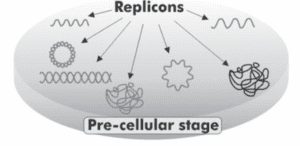

A genetic parasite is defined as a non-cellular DNA sequence that provides no benefit to the host. They have their own genomes but depend on the host for multiple functions, including replication and protein synthesis. Consequently genetic parasites incur a cost on the host, which can range from minimal (DNA elements that only replicate with the host genome) to extreme (lytic viruses that rapidly kill the host).
Genetic parasites move into new hosts by a general process called horizontal gene transfer (HGT). Such uptake is also important for the evolution of cells, because it allows adaptation to new environments and the acquisition of genes that benefit the hosts. Without HGT, asexual organisms (like bacteria and archaea) accumulate deleterious mutations in their genomes. Uptake of environmental DNA is therefore essential for long-term survival.
Is it possible for cells to reduce their HGT rates below that needed for the persistence of parasites? To answer this question, the dynamics of parasite copy number was mathematically modeled in bacteria and archaea by considering the rates of loss and acquisition and the cost to the host. The results indicate that cells cannot reduce their rates of HGT below the threshold needed for parasite persistence without detrimental side effects.
The authors conclude that genetic parasites are virtually inevitable in cellular organisms. Furthermore, organisms exist not far from the edge of parasite inevitability.
Parasites are inherent to life!
An interesting diversion from this discussion concerns the emergence of parasites in the pre-cellular world, which likely consisted solely of self-replicating genetic elements (pictured). Cheaters would not doubt have arisen in this world, which replicated faster and exploited resources provided by replicators, causing collapse of the system. It has been hypothesized that the formation of cells was a direct effect of the emergence of such cheaters. The effect of the parasites would have been limited by regulating the rate at which they could be taken into cells. We are left with the intriguing possibility that ancient parasite-host arms races were drivers of the development of complex cells.

Comments are closed.